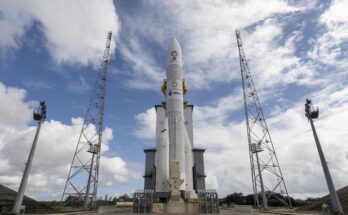
In a recent interview, Rick Lober, vice president and general manager of the Defense and Government Systems Division at Hughes, shed some light on the future of space architecture in the context of recent U.S. Department of Defense initiatives. I spoke with Mr. Lober on September 6 to glean the perspective of an expert on these initiatives.
Hughes was one of 16 companies that received five-year indefinite delivery/indefinite quantity (IDIQ) contracts for the Proliferated Low Earth Orbit (PLEO) program. Hughes specifically will leverage the OneWeb constellation and its own future Lyra constellation to fulfill the DoD’s needs. Wideband will be covered by the OneWeb constellation, while Lyra will operate an S-band (narrowband) system. Lyra, built by Astro Digital, will have an initial 28 satellites, set to launch in 2024.
With all that being said, is this rush to low-Earth orbit justified? Well to some degree, yes. LEO has its advantages, including lower latency and theoretical resiliency in case of attack. As Lober pointed out, though, 70 percent of the Earth is covered in water, so a large amount of this LEO bandwidth is wasted. The bandwidth of geosynchronous satellites, on the other hand, is directed toward a particular region of Earth, and their capacity to move data outclasses single LEO satellites by a long shot.
The answer to providing the DoD with resiliency is a mixed model, one that incorporates multiple orbits to bring data to the end user, DoD or otherwise. Here, Starlink’s performance in Ukraine should not be understated, but it also must be understood that even that constellation has its drawbacks. Starlink’s end users are consumers which, depending on their data usage, might bring the overall network to provide differentiating service. Differentiating service is likely something the DoD would like to avoid. The Hughes model, as an example, uses an “enterprise-grade” system that will guarantee the bandwidth that the DoD and service providers need.
The combination of different orbits and a model that secures bandwidth needed for the DoD is likely the way forward. Software-Defined Networking, i.e., the use of software rather than hardware to control a network, is gaining traction. “Packets” of data, such as those used by the NASA Deep Space Network, send information as a bundle rather than as a constant stream. As Lober stated, having multiple orbits to bring this packet to the end user would add resiliency.
Just how the information packets will get to where they need to go will continue to be debated by those in the industry. In this analyst’s mind, the more satellites the better, but multiple orbits are the key.
Carter Palmer has long held a keen interest in military matters and aviation. As a FI's space systems analyst he is responsible for updating the reports and analyses within the Space Systems Forecast – Launch Vehicles & Manned Platforms and Space Systems Forecast – Satellites & Spacecraft products.




